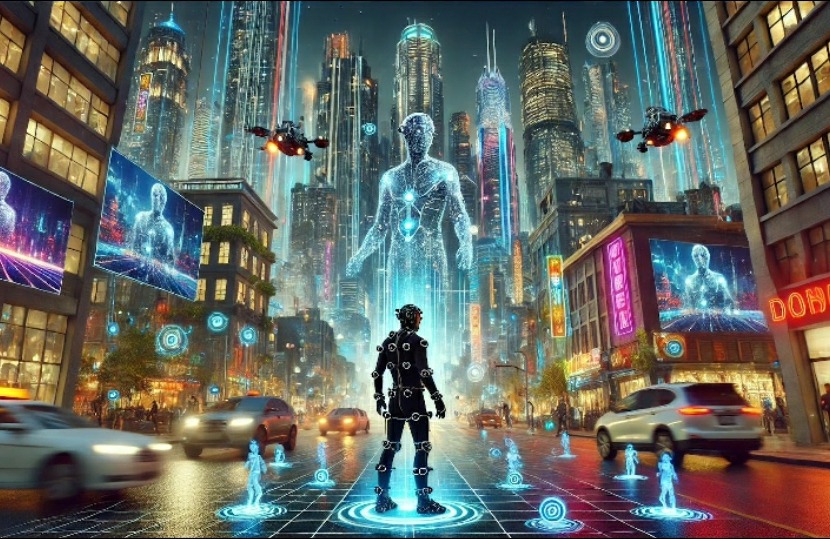
The cinematic world is undergoing a silent revolution, driven by AI-powered special effects. Beyond captivating audiences with thrilling narratives, science fiction films are now pushing the boundaries of technology, integrating cutting-edge AI tools to revolutionize visual effects (VFX) and storytelling.
How AI is Redefining Visual Effects
The integration of artificial intelligence in visual effects has transformed the filmmaking process. AI algorithms analyze vast amounts of data and automate complex tasks, reducing the time and resources required to produce high-quality VFX. This democratization allows filmmakers at all levels to create intricate and realistic scenes, enhancing both film and sci-fi gaming with more immersive, lifelike visuals.
A key area of AI’s impact is in motion capture technology. Traditionally, actors needed to wear suits with sensors to track their movements. Today, AI-driven systems can replicate human movements with minimal equipment, resulting in more natural and fluid animations. This advancement has made motion capture more accessible and efficient, significantly elevating the quality of digital characters in films.
Elevating Realism Through AI
AI-driven tools are revolutionizing the realism of special effects in sci-fi films. Machine learning algorithms generate highly detailed textures and models, bringing CGI characters and environments to life like never before. Tools like DeepMotion use neural networks to create realistic character animations, adding a new level of authenticity to on-screen performances. These advancements are also applied to sci-fi gaming, offering gamers unprecedented visual fidelity and realism.
AI is also transforming the rendering process. Traditional rendering can be slow and resource-heavy, but AI-based solutions like NVIDIA’s OptiX use deep learning to speed up rendering times while maintaining high-quality images. This allows filmmakers to experiment with complex scenes and achieve unparalleled visual fidelity, ultimately pushing the boundaries of creative expression.

Revolutionizing Storytelling in Sci-Fi Cinema
Beyond visual effects, AI is reshaping the way stories are told in sci-fi films. AI algorithms can analyze scripts, suggest improvements, and assist writers in crafting more engaging narratives. Pre-visualization tools powered by AI help directors plan and visualize scenes before filming, leading to more efficient production schedules and enhanced storytelling.
Generative adversarial networks (GANs) represent another exciting application of AI in storytelling. These networks create new visuals based on predefined parameters, allowing filmmakers to generate unique and imaginative worlds. For instance, films like The Matrix Resurrections utilized AI-generated visuals to craft stunning digital landscapes, showcasing the potential of GANs in creating one-of-a-kind visual experiences.
Real-World Examples of AI in Modern Sci-Fi Films
Several contemporary sci-fi films have successfully leveraged AI-driven special effects to elevate their narratives. Blade Runner 2049 employed AI to create its dystopian future cityscapes, using algorithms to generate realistic environments with dynamic lighting and weather effects. Similarly, Avengers: Endgame utilized AI to manage complex battle scenes, coordinating the interactions of hundreds of characters with realistic movement and behavior.
The Future of AI in Sci-Fi Cinema
As AI technology continues to advance, its influence on sci-fi cinema is set to expand even further. Future developments may include more sophisticated motion capture systems, enhanced rendering techniques, and more intuitive storytelling tools. These innovations will empower filmmakers to explore new creative territories, delivering even more immersive and visually stunning experiences.
The accessibility of AI tools will also level the playing field, giving independent filmmakers access to the same advanced technology as major studios. This democratization is likely to result in a more diverse range of sci-fi films, each with its own unique visual style and narrative approach.
Conclusion
AI-driven special effects are revolutionizing the landscape of modern sci-fi cinema. From enhancing the realism of visual effects to transforming storytelling techniques, AI tools are enabling filmmakers to create more immersive and captivating experiences. As technology continues to evolve, the future of sci-fi cinema promises even more groundbreaking innovations, making it an exhilarating time for creators and audiences alike.


